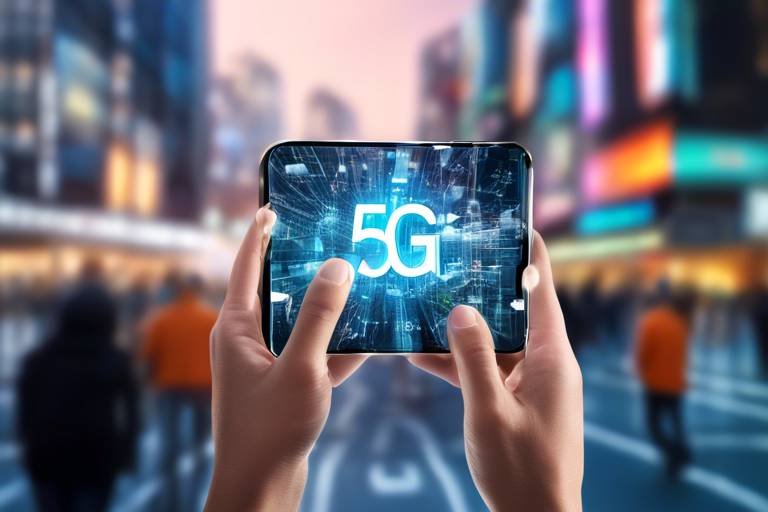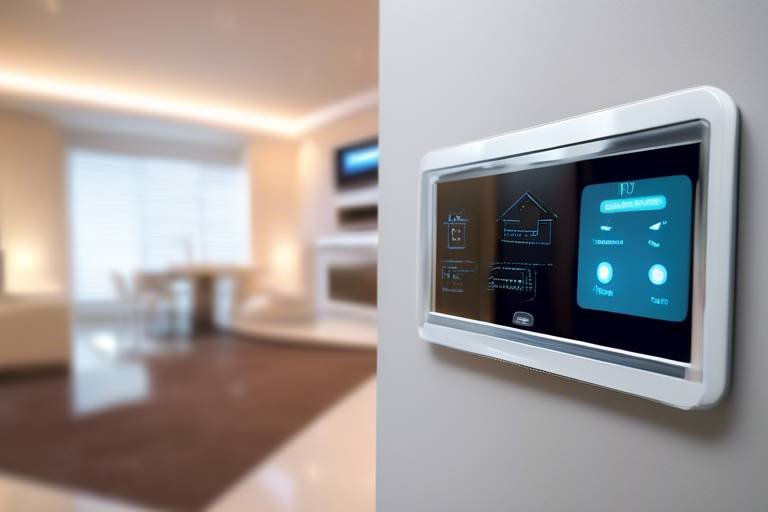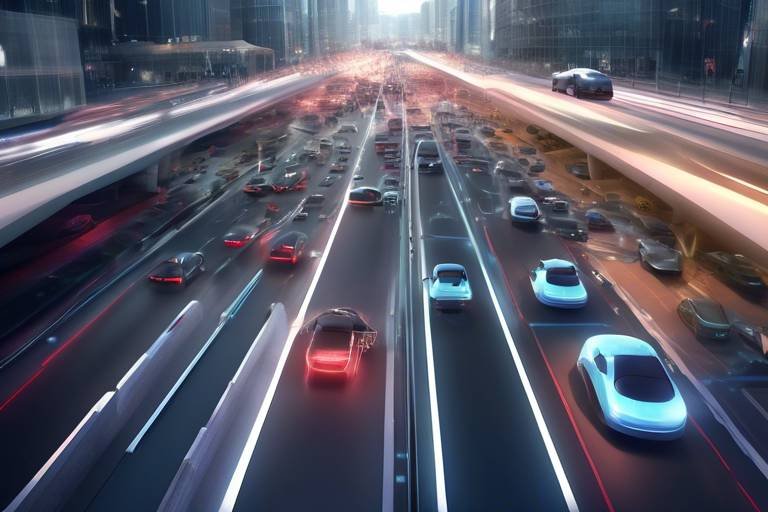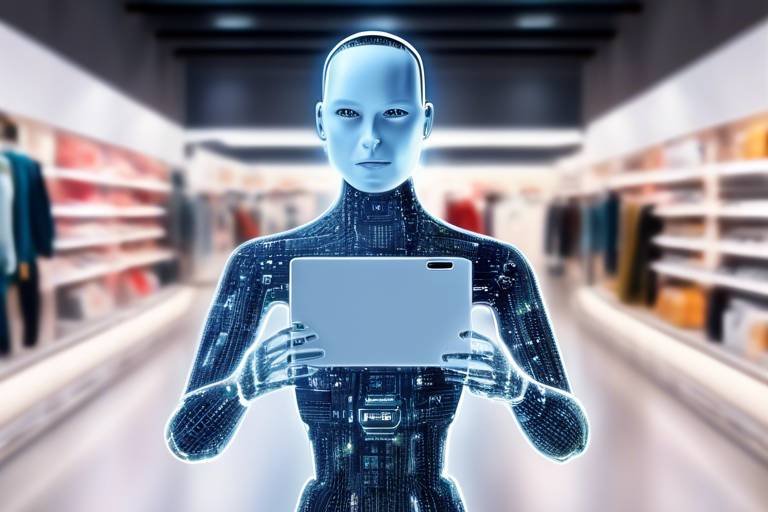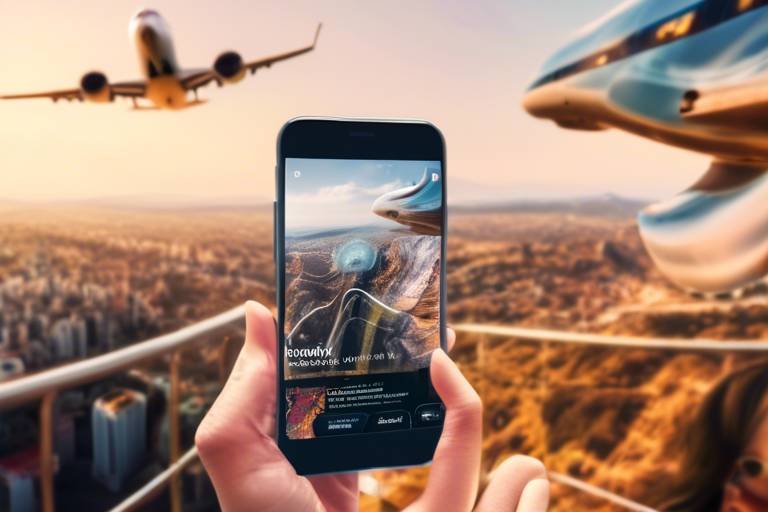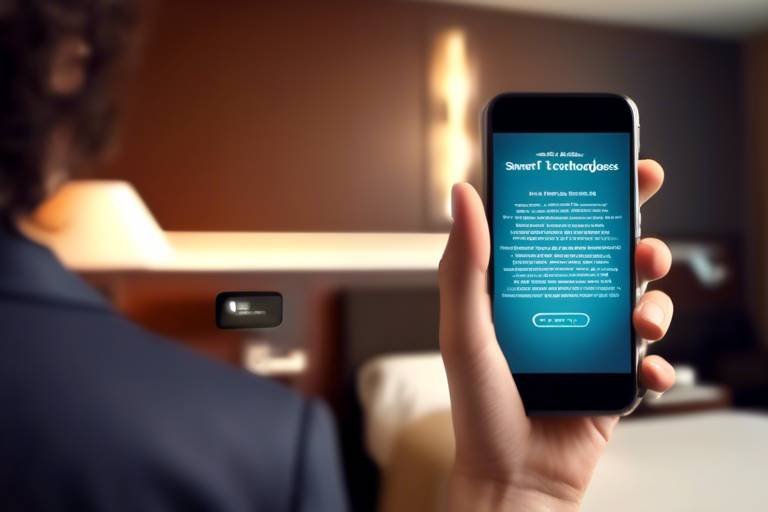How 5G Technology is Transforming Connectivity
In today's fast-paced world, staying connected is more important than ever, and 5G technology is at the forefront of this connectivity revolution. Imagine a world where your devices communicate seamlessly, where downloading a movie takes mere seconds, and where real-time interactions are not just a dream but a reality. This is not science fiction; it’s the promise of 5G. As we dive into the transformative impact of this technology, we will explore its incredible advancements in speed, its wide-ranging applications, and the potential challenges that come with its widespread adoption. Buckle up, because the future of connectivity is about to get a whole lot faster!
The journey to 5G has been nothing short of remarkable. From the early days of 1G, which merely allowed voice calls, to the current 4G LTE networks that support high-speed internet, each generation has brought us closer to a hyper-connected world. But what exactly sets 5G apart? For starters, it offers significantly higher data transfer speeds, reduced latency, and the ability to connect a multitude of devices simultaneously. This means that while 4G might struggle to support a crowded stadium of users, 5G will thrive, ensuring everyone stays connected without a hitch. It's like upgrading from a crowded highway to a multi-lane superhighway, where traffic flows smoothly and efficiently.
One of the most exciting aspects of 5G technology is its ability to deliver ultra-fast data transfer rates. Imagine downloading an entire season of your favorite show in just a few minutes! With speeds that can reach up to 10 gigabits per second, 5G technology not only enhances your streaming experience but also revolutionizes how businesses operate. Companies can transfer large files in seconds, conduct video conferences without lag, and utilize cloud services more effectively. This leap in speed means that whether you’re a gamer, a remote worker, or just someone who loves binge-watching shows, your experience will be smoother and more enjoyable than ever before.
The increased speed and reduced latency of 5G will have a profound impact on mobile applications. Consider the possibilities: applications that previously struggled with performance can now operate seamlessly, enabling complex functionalities and real-time interactions. For instance, augmented reality (AR) apps, which require rapid data processing, will flourish under 5G, offering users immersive experiences that were once impossible. Whether it’s trying on virtual clothes or navigating through a 3D map, the potential for innovation is limitless.
Speaking of immersive experiences, let’s talk about gaming. The gaming industry is on the brink of a revolution, thanks to 5G technology. With the ability to support cloud gaming and augmented reality, gamers can expect high-quality graphics and minimal lag. No more frustrating delays or pixelated images! It’s akin to having a high-end gaming console in your pocket, allowing you to enjoy console-quality games anytime, anywhere. This shift will not only enhance individual gaming experiences but also foster a new era of multiplayer gaming, where players can connect and compete in real-time like never before.
5G technology is also the backbone of the smart cities of tomorrow. Imagine a city where traffic lights adjust in real-time based on traffic flow, where waste management systems alert services when bins are full, and where public safety is enhanced through connected surveillance systems. The Internet of Things (IoT) will thrive in a 5G environment, connecting devices at unprecedented speeds. This will allow for smarter resource management and enhanced urban living, creating a more efficient and sustainable future for everyone.
In the healthcare sector, 5G technology is poised to make a significant impact. With the ability to enable telemedicine, remote monitoring, and real-time data sharing, healthcare providers can improve patient outcomes and accessibility to medical services. Imagine a world where doctors can perform remote surgeries with precision, or where patients can have their vital signs monitored continuously without being tethered to a hospital. This technological leap not only enhances patient care but also expands access to medical services in underserved areas, bridging gaps that previously existed.
While the benefits of 5G technology are undeniable, the rollout does not come without its challenges. One of the primary concerns is the substantial investment required for infrastructure development. Telecommunications companies and governments must commit to building new towers and fiber-optic networks, which can be a logistical and financial hurdle. Additionally, as we embrace this new technology, we must also be vigilant about cybersecurity risks. The expansion of 5G opens up new avenues for cyber threats, necessitating robust security measures to protect sensitive data and maintain user trust in increasingly connected environments.
Building the necessary infrastructure for 5G is no small feat. It requires a concerted effort from both private and public sectors, as well as significant financial investment. The deployment of new towers and fiber-optic networks must be executed meticulously to ensure that the technology can reach urban, suburban, and rural areas alike. This is akin to laying down the tracks for a new train system; it takes time, resources, and careful planning to ensure that the network is both efficient and effective.
As we embrace the connectivity that 5G offers, we must also be aware of the potential cybersecurity threats that come with it. The more connected we become, the more vulnerable we may be to cyber attacks. This makes it imperative for businesses and governments to implement robust security measures to protect sensitive data and maintain user trust. Think of it as fortifying a castle; while the walls may be strong, it’s the vigilance of those inside that ensures safety.
Q: What is 5G technology?
A: 5G technology is the fifth generation of mobile networks, designed to provide faster speeds, lower latency, and the ability to connect a large number of devices simultaneously.
Q: How does 5G differ from 4G?
A: 5G offers significantly higher data transfer rates and reduced latency compared to 4G, enabling new applications and improved user experiences.
Q: What are the benefits of 5G in healthcare?
A: 5G enables telemedicine, remote monitoring, and real-time data sharing, which can improve patient outcomes and increase accessibility to medical services.
Q: What challenges does 5G face?
A: Challenges include the high costs of infrastructure development, cybersecurity risks, and public health concerns that need to be addressed for safe implementation.

The Rise of 5G Technology
The emergence of 5G technology marks a significant milestone in the evolution of mobile networks, setting the stage for a new era of connectivity. As the fifth generation of wireless technology, 5G is not just an incremental upgrade from its predecessor, 4G; it represents a paradigm shift that will transform how we interact with the digital world. The development of 5G began in earnest around 2016, with the first commercial networks launching in 2019. This rapid advancement is driven by the increasing demand for faster, more reliable internet access, as well as the proliferation of smart devices and the Internet of Things (IoT).
One of the most exciting aspects of 5G technology is its ability to deliver data at unprecedented speeds—up to 100 times faster than 4G. This leap in speed is made possible through several key features, including:
- Higher Frequency Bands: 5G utilizes higher frequency bands, allowing for more data to be transmitted simultaneously.
- Massive MIMO: This technology involves multiple antennas at the base station, improving capacity and efficiency.
- Network Slicing: 5G can create multiple virtual networks on a single physical infrastructure, tailored for specific applications.
These features not only enhance speed but also reduce latency, which is the delay before a transfer of data begins following an instruction. With 5G, latency can be as low as 1 millisecond, paving the way for applications that require real-time responsiveness, such as autonomous vehicles and remote surgeries. This is a significant improvement over 4G, which typically experiences latencies of 30-50 milliseconds.
But what truly sets 5G apart is its potential to connect a vast number of devices simultaneously. While 4G networks can support around 2,000 devices per square kilometer, 5G networks can accommodate up to a million devices in the same area. This capability is vital for the growth of smart cities, where everything from traffic lights to public transportation systems will rely on constant connectivity.
In conclusion, the rise of 5G technology is not just about faster internet; it's about creating a connected ecosystem that enhances our daily lives. As we continue to explore its capabilities, we can expect to see innovations that were previously unimaginable, fundamentally altering how we communicate, work, and live.

Enhanced Speed and Efficiency
Imagine a world where downloading a full-length movie takes mere seconds instead of minutes. 5G technology is not just a dream; it’s a reality that is rapidly transforming our digital landscape. With speeds that can reach up to 10 Gbps, 5G promises to be up to 100 times faster than its predecessor, 4G. This leap in speed is not just about bragging rights; it fundamentally changes how we interact with technology on a daily basis.
One of the most exciting aspects of 5G is its ability to support a multitude of devices simultaneously without sacrificing performance. This is crucial as we move towards a more connected world where everything from our refrigerators to our cars will be online. The efficiency of 5G networks means that users can enjoy seamless experiences whether they are streaming their favorite shows, participating in video calls, or playing online games. The reduced latency—down to as low as 1 millisecond—means that actions occur almost instantaneously, making real-time interactions a breeze.
To illustrate the difference, consider the following comparison of data transfer rates:
| Network Type | Download Speed (Mbps) | Latency (ms) |
|---|---|---|
| 4G | 20-100 | 30-50 |
| 5G | 1000-10000 | 1 |
This dramatic increase in speed and efficiency opens up a plethora of opportunities for businesses and consumers alike. For consumers, it means that streaming high-definition content will be smooth and buffer-free, while businesses can leverage this technology to enhance customer experiences and streamline operations. Think about it: how many times have you been frustrated by slow loading times or dropped connections? With 5G, those days will soon be behind us.
Moreover, the enhanced efficiency of 5G networks allows for better resource allocation. With the ability to connect numerous devices without a hitch, industries can implement smart technologies that rely on real-time data. For instance, farmers can monitor soil conditions and crop health through connected sensors, allowing them to make informed decisions that maximize yield while minimizing waste. Similarly, manufacturers can utilize 5G to optimize production lines, reducing downtime and increasing output.
In summary, the enhanced speed and efficiency of 5G technology are set to revolutionize not just our personal lives, but also how businesses operate. The implications are vast, from improved entertainment experiences to smarter cities and more efficient industries. As we embrace this new era of connectivity, the question isn’t whether we’ll benefit from 5G, but rather how quickly we can adapt to and harness its potential.

Impact on Mobile Applications
The advent of 5G technology is not just a buzzword; it’s a game-changer that’s set to redefine how we interact with mobile applications. With its incredible speed and reduced latency, 5G opens up a world of possibilities that were previously unimaginable. Imagine downloading a full-length movie in mere seconds or engaging in a video call without any lag. This is the new reality that 5G brings to the table, and it’s going to revolutionize our mobile experience.
One of the most exciting aspects of 5G is its ability to support more complex functionalities within mobile applications. Developers can now create apps that require real-time data processing and interactions, enhancing user experiences across various platforms. For instance, applications that involve augmented reality (AR) or virtual reality (VR) will flourish under 5G’s high-speed network, allowing users to engage with digital content in ways that were once limited by the slower networks of the past.
Consider the gaming industry, which is already experiencing a seismic shift thanks to 5G. With the capability to stream high-quality graphics with minimal lag, mobile gaming can now compete with traditional console gaming. Gamers can enjoy immersive experiences without the frustration of buffering or delays. The integration of cloud gaming services will allow players to access their games from anywhere, further enhancing the convenience and flexibility of gaming on the go.
Moreover, 5G technology facilitates the development of smarter applications that can harness the power of the Internet of Things (IoT). Imagine a world where your fridge can communicate with your grocery app to notify you when you’re running low on essentials, or your wearable device can share real-time health data with your doctor. This level of connectivity will not only improve user convenience but also lead to better resource management and decision-making.
However, the impact of 5G on mobile applications goes beyond just speed and efficiency. It also opens up new avenues for innovation in industries such as healthcare, education, and entertainment. For example, telemedicine applications can leverage 5G to provide high-quality video consultations, allowing doctors to diagnose patients remotely with greater accuracy. In education, interactive learning tools can engage students in real-time, making learning more dynamic and effective.
In summary, the impact of 5G on mobile applications is profound and far-reaching. It enables a new era of app development that focuses on speed, efficiency, and real-time interactions. As we embrace this technology, we can expect to see an explosion of innovative applications that enhance our daily lives in ways we’ve only begun to imagine.
- What is 5G technology? 5G is the fifth generation of mobile network technology, offering faster speeds, lower latency, and the ability to connect more devices than previous generations.
- How will 5G affect mobile applications? 5G will enhance mobile applications by enabling real-time interactions, high-quality streaming, and more complex functionalities, leading to a better user experience.
- What industries will benefit from 5G technology? Industries like gaming, healthcare, education, and smart cities will see significant advancements due to the capabilities of 5G technology.
- Are there any challenges associated with 5G? Yes, challenges include infrastructure development, cybersecurity risks, and public health concerns that need to be addressed for effective implementation.

Gaming Revolution
The advent of 5G technology is nothing short of a game-changer for the world of gaming. Imagine a realm where latency is virtually eliminated, and the graphics are so immersive that you feel like you're stepping into a different reality. That's the promise of 5G, and it's set to transform mobile gaming in ways we have only dreamed of. With data transfer rates soaring to unprecedented heights, games that once struggled to deliver seamless experiences can now operate flawlessly, allowing players to dive into their favorite titles without the dreaded lag.
One of the most exciting prospects of 5G is its ability to enable cloud gaming. This means that players can stream games directly from the cloud, rather than relying on their device's hardware. The implications are staggering: no longer will you need a high-end console or a powerful gaming PC to enjoy the latest titles. Instead, you can play graphically intensive games on your smartphone or tablet with the same quality as a traditional console. This democratization of gaming opens the door for a broader audience, allowing anyone with a 5G connection to access high-quality gaming experiences.
Furthermore, the integration of augmented reality (AR) into gaming is set to explode with 5G. Picture yourself walking through your neighborhood and seeing virtual characters interacting with the real world around you. This is not just a fantasy; it's a reality that 5G will facilitate. The reduced latency and increased bandwidth mean that AR experiences can be more interactive and responsive, creating a seamless blend between the digital and physical worlds. For instance, games like Pokémon GO could evolve into even more engaging experiences, where players can see and interact with Pokémon in real-time, right in their backyards.
Moreover, the potential for multiplayer gaming is enhanced exponentially with 5G. Imagine playing a battle royale game with hundreds of players, all connected in real-time without any lag. The speed of 5G allows for massive multiplayer experiences that are not only thrilling but also fair, as everyone has an equal chance to react and compete. This could lead to new genres of games that rely heavily on real-time interactions, pushing the boundaries of creativity within the gaming industry.
In summary, the driven by 5G technology is set to redefine how we play, interact, and experience games. With cloud gaming, augmented reality, and enhanced multiplayer capabilities, the gaming landscape will be more vibrant and accessible than ever before. As we stand on the brink of this new era, one can't help but wonder: what new adventures await us in the realm of gaming?
- What is 5G technology? 5G technology is the fifth generation of mobile networks, offering faster speeds, lower latency, and greater capacity than its predecessors.
- How will 5G impact gaming? 5G will enhance gaming experiences through faster data transfer, reduced lag, cloud gaming capabilities, and improved augmented reality applications.
- Can I play games on my smartphone using 5G? Yes! With 5G technology, you can enjoy high-quality gaming experiences on your smartphone without the need for expensive hardware.

Smart Cities and IoT
Imagine walking through a city where everything is interconnected, where your car communicates with traffic lights, and your home adjusts its temperature based on your preferences without you lifting a finger. This is the promise of 5G technology and its role in the development of smart cities and the Internet of Things (IoT). With the ability to connect millions of devices simultaneously and transmit data at lightning-fast speeds, 5G is paving the way for a more efficient, responsive, and sustainable urban environment.
In a smart city, data flows seamlessly between various systems, allowing for enhanced resource management and improved quality of life for its residents. For instance, consider how 5G can optimize traffic management. Sensors embedded in roads can monitor vehicle flow in real-time, adjusting traffic signals to minimize congestion. This not only reduces travel time but also lowers emissions, contributing to a cleaner environment. It’s like having a personal traffic assistant that ensures you never hit a red light!
Moreover, the integration of IoT devices in smart cities can lead to significant improvements in public safety. Surveillance cameras equipped with AI can analyze footage in real-time, identifying potential threats and alerting authorities instantly. This proactive approach to security can drastically reduce crime rates and enhance community safety. The possibilities are endless, from smart waste management systems that notify sanitation workers when bins are full to smart streetlights that dim when no one is around, saving energy.
However, the transformation into smart cities is not without its challenges. The sheer volume of data generated by IoT devices raises concerns about data privacy and security. As cities become more connected, ensuring that sensitive information is protected from cyber threats becomes paramount. Additionally, the infrastructure required to support these technologies, including high-speed internet access and advanced data processing capabilities, must be developed and maintained.
To illustrate the impact of 5G on smart cities and IoT, consider the following table that outlines key benefits:
| Benefit | Description |
|---|---|
| Improved Efficiency | Real-time data collection and analysis lead to better resource management. |
| Enhanced Public Safety | Smart surveillance and emergency response systems increase security. |
| Environmental Sustainability | Smart systems reduce waste and emissions, promoting greener living. |
| Increased Quality of Life | Residents benefit from improved services and urban planning. |
As we stand on the brink of this technological revolution, the question remains: Are we ready to embrace the changes that 5G and smart cities will bring? The potential is immense, and with careful planning and consideration of the associated challenges, we can create urban environments that not only meet the needs of today’s inhabitants but also pave the way for future generations.
- What is a smart city? A smart city uses digital technology to enhance performance and well-being, including improved public services and sustainable practices.
- How does 5G technology support IoT? 5G provides the high-speed connectivity necessary for IoT devices to communicate effectively, enabling real-time data processing and decision-making.
- What are the challenges of implementing smart city technology? Challenges include infrastructure costs, data privacy concerns, and the need for robust cybersecurity measures.

Healthcare Innovations
The advent of 5G technology is not just a buzzword; it’s a revolution, especially in the healthcare sector. Imagine a world where doctors can perform remote surgeries with the precision of being in the same room as their patients. This is no longer a distant dream but a tangible reality made possible by the lightning-fast speeds and low latency that 5G offers. With 5G, healthcare professionals can access real-time data, enabling them to make quicker, more informed decisions that could save lives. It’s like having a superpower at your fingertips!
One of the most significant innovations is in the realm of telemedicine. 5G allows for high-definition video consultations that feel almost as good as face-to-face interactions. Patients, especially those in remote areas, can receive expert advice without the need to travel long distances. This is particularly beneficial for individuals with chronic conditions who require regular check-ups. In fact, a study by the American Telemedicine Association found that patients using telemedicine were 50% more likely to adhere to their treatment plans. Talk about a win-win!
Moreover, 5G technology enhances the capabilities of wearable health devices. Imagine a smartwatch that not only tracks your heart rate but also streams that data in real-time to your doctor. This seamless flow of information can lead to proactive healthcare, where potential issues are addressed before they escalate. The integration of wearables with 5G can also facilitate continuous monitoring of patients, providing healthcare providers with invaluable insights into their patients' health status.
Additionally, let's not forget about the role of artificial intelligence (AI) in healthcare. With 5G, AI algorithms can analyze vast amounts of data almost instantaneously. This means that diagnostic tools can provide results in a fraction of the time it currently takes. For instance, AI can help in identifying patterns in medical imaging, leading to quicker diagnoses of conditions like cancer. In a world where time is often of the essence, this could be a game-changer.
However, while the potential is enormous, it’s essential to address the challenges that come with these innovations. For instance, the need for robust cybersecurity measures cannot be overstated. As healthcare becomes increasingly interconnected, protecting sensitive patient data from cyber threats is paramount. The integration of 5G in healthcare must be accompanied by stringent security protocols to maintain patient trust and safety.
In summary, the innovations brought about by 5G in healthcare are nothing short of revolutionary. From remote surgeries to enhanced telemedicine, the possibilities are endless. As we stand on the brink of this new era, it’s crucial to harness the power of 5G responsibly, ensuring that while we embrace innovation, we also safeguard the very essence of healthcare—patient care.
- What is 5G technology?
5G is the fifth generation of mobile network technology, offering faster speeds, lower latency, and the ability to connect more devices simultaneously compared to previous generations.
- How will 5G impact telemedicine?
5G will enhance telemedicine by enabling high-definition video consultations, real-time data sharing, and remote monitoring, making healthcare more accessible.
- What are the cybersecurity concerns with 5G?
As healthcare becomes more interconnected with 5G, the risk of cyber threats increases, necessitating robust security measures to protect sensitive patient data.

Challenges and Concerns
As we stand on the brink of a new era defined by 5G technology, it's essential to acknowledge that this revolutionary advancement is not without its challenges and concerns. While the benefits of faster speeds and enhanced connectivity are tantalizing, the road to widespread adoption is paved with potential obstacles that need addressing. One of the most pressing issues is the infrastructure development required to support 5G networks. Telecommunication companies and governments must invest heavily in building new towers and upgrading existing fiber-optic networks. This is no small feat; it requires a significant financial commitment and meticulous planning to ensure that the infrastructure can handle the demands of a hyper-connected world.
Moreover, the deployment of 5G technology raises cybersecurity issues that cannot be overlooked. With more devices connected to the internet than ever before, the potential for cyber threats escalates dramatically. Hackers are always on the lookout for vulnerabilities, and the increased number of connected devices could provide a larger attack surface. This necessitates the implementation of robust security measures to protect sensitive data and maintain user trust. After all, no one wants their personal information compromised in a world where everything is interconnected.
Additionally, there are public health concerns associated with the rollout of 5G technology. Some studies suggest that the electromagnetic frequencies used in 5G could pose health risks, although the scientific community remains divided on this issue. Public perception is crucial, and addressing these concerns transparently will be vital in gaining widespread acceptance of 5G. It’s a bit like introducing a new recipe to a family; you have to reassure them that the new ingredients are safe and delicious before they’ll give it a try.
To summarize, the challenges surrounding 5G technology include:
- Infrastructure Development: Significant investment and planning are required.
- Cybersecurity Issues: Increased connectivity raises the stakes for potential cyber threats.
- Public Health Concerns: Ongoing debates about the safety of electromagnetic frequencies.
These challenges are not insurmountable, but they do require careful consideration and proactive measures from all stakeholders involved. As we embrace the future of connectivity, it’s crucial to address these issues head-on to ensure that 5G technology can deliver on its promise of transforming our world.
Q1: What is 5G technology?
5G technology is the fifth generation of mobile networks, offering faster data speeds, lower latency, and the ability to connect more devices simultaneously compared to previous generations.
Q2: What are the main benefits of 5G?
The main benefits of 5G include enhanced speed for data transfer, improved network efficiency, and the ability to support advanced applications like IoT, smart cities, and telemedicine.
Q3: What challenges does 5G face?
5G technology faces challenges such as the need for significant infrastructure investment, potential cybersecurity threats, and public health concerns regarding electromagnetic frequencies.
Q4: How will 5G impact daily life?
5G is expected to revolutionize daily life by enabling faster internet access, enhancing mobile applications, and facilitating innovations in sectors like healthcare and entertainment.

Infrastructure Development
The rollout of 5G technology is not just about upgrading to faster internet; it represents a monumental shift in the way we connect and communicate. However, this transformation is heavily reliant on robust infrastructure development. To fully realize the potential of 5G, telecommunications companies and governments must invest heavily in new infrastructure, which includes the construction of numerous cell towers, the expansion of fiber-optic networks, and the installation of advanced base stations.
Unlike its predecessors, 5G operates on a higher frequency, which means it requires a denser network of antennas to ensure optimal coverage and performance. This is akin to upgrading from a small, cozy café to a bustling city center; the latter needs more outlets to serve the growing crowd efficiently. The challenge here is not only the financial aspect but also the logistical hurdles that come with deploying new technology in urban and rural areas alike. In many cases, local regulations and zoning laws can complicate the installation of new towers, leading to delays that can hinder the rollout.
Moreover, the investment needed for this infrastructure development is substantial. According to a recent study, the global spending on 5G infrastructure is projected to reach $1 trillion by 2025. To break it down:
| Region | Projected Investment (2025) |
|---|---|
| North America | $300 billion |
| Europe | $250 billion |
| Asia-Pacific | $400 billion |
As we can see, the financial commitment is significant and varies by region, reflecting the differing levels of demand and existing infrastructure. In addition to the monetary investment, there are also human resources and technical expertise required to implement this technology effectively. Skilled workers, from engineers to technicians, are essential to ensure that these new systems are installed properly and maintained over time.
Furthermore, addressing public concerns about the placement of new infrastructure is crucial. Many communities are apprehensive about the potential health effects of increased electromagnetic fields from the new towers. To alleviate these fears, it's essential for companies to engage with local communities, provide transparent information about safety standards, and demonstrate the benefits of 5G technology. By doing so, they can foster trust and cooperation, which are vital for the successful deployment of this new technology.
In summary, the infrastructure development necessary for 5G technology is a complex, multi-faceted challenge that requires significant investment, community engagement, and regulatory navigation. It’s not just about putting up more towers; it’s about creating a comprehensive network that can support the future of connectivity. As we move forward, the collaboration between various stakeholders—governments, private companies, and communities—will be crucial in overcoming these hurdles and unlocking the full potential of 5G.
- What is 5G technology? - 5G is the fifth generation of mobile network technology, offering significantly faster data speeds and lower latency than previous generations.
- How does 5G differ from 4G? - 5G offers higher speeds, greater capacity, and improved efficiency, making it capable of supporting more devices simultaneously.
- What are the main challenges in 5G infrastructure development? - Key challenges include high costs, regulatory hurdles, and public concerns about health and safety.
- How will 5G impact everyday life? - 5G will enable advancements in various sectors, including healthcare, entertainment, and smart cities, enhancing overall quality of life.

Cybersecurity Issues
As we embrace the lightning-fast world of 5G technology, it's crucial to recognize the shadows lurking behind its brilliance—specifically, the that accompany this new wave of connectivity. With the increased speed and capacity of 5G, the attack surface for cybercriminals expands dramatically. Imagine a bustling city where every street and alley is interconnected; now, consider the potential for nefarious actors to exploit those connections. The vast number of devices linked to 5G networks can create vulnerabilities that were previously non-existent with older technologies.
One of the primary concerns is the sheer volume of data being transmitted. With more devices connected than ever before, the potential for data breaches escalates. According to recent studies, the number of connected devices is expected to skyrocket, reaching over 75 billion by 2025. Each of these devices can serve as a potential entry point for hackers. The challenge here is to ensure that all devices, from smartphones to smart home appliances, are equipped with adequate security measures.
Furthermore, the complexity of 5G networks adds another layer of difficulty. Unlike previous generations, 5G relies on a mix of technologies, including cloud computing and edge computing, which can complicate security protocols. This interconnectedness can lead to what experts call a "cascade effect," where a breach in one device or service can lead to a domino effect, compromising entire networks.
To combat these challenges, telecommunications companies and governments must prioritize robust cybersecurity protocols. This includes the implementation of advanced encryption methods, continuous monitoring for suspicious activities, and regular updates to security systems. A proactive approach is essential, as reactive measures often come too late.
Moreover, public awareness plays a vital role in the security landscape. Users must be educated about the risks associated with 5G technology and the importance of adopting strong passwords and security practices. Here are some essential tips for individuals to enhance their cybersecurity in a 5G world:
- Use Strong Passwords: Create complex passwords that are hard to guess and change them regularly.
- Enable Two-Factor Authentication: This adds an extra layer of security to your accounts.
- Regular Updates: Keep all devices updated with the latest security patches.
- Beware of Public Wi-Fi: Avoid accessing sensitive information over unsecured networks.
In conclusion, while 5G technology holds immense potential for transforming our connectivity landscape, we must tread carefully. The cybersecurity issues it presents are not merely obstacles but rather critical challenges that require immediate attention. By investing in security measures and fostering a culture of awareness, we can harness the power of 5G while safeguarding our digital lives.
- What are the main cybersecurity risks associated with 5G? The main risks include increased attack surfaces due to more connected devices, potential data breaches, and the complexity of the network.
- How can users protect themselves in a 5G environment? Users can protect themselves by using strong passwords, enabling two-factor authentication, and keeping their devices updated.
- Is 5G inherently less secure than previous technologies? Not necessarily, but its complexity and the number of connected devices can create more vulnerabilities if not properly managed.
Frequently Asked Questions
- What is 5G technology?
5G technology is the fifth generation of mobile network technology, designed to provide faster data speeds, lower latency, and the ability to connect more devices simultaneously compared to its predecessor, 4G. It opens up a world of possibilities for various applications, from enhanced mobile experiences to smart city innovations.
- How does 5G improve mobile applications?
With its significantly faster data transfer rates and reduced latency, 5G enables mobile applications to perform more complex tasks in real-time. This means smoother streaming, quicker downloads, and an overall enhanced user experience, making apps more efficient and interactive.
- What impact will 5G have on gaming?
5G is set to revolutionize gaming by facilitating cloud gaming and augmented reality experiences. Gamers will enjoy high-quality graphics with minimal lag, allowing for a more immersive and engaging gaming experience. Imagine playing your favorite game without interruptions—5G makes that a reality!
- How will 5G influence healthcare?
In the healthcare sector, 5G technology enables telemedicine, remote patient monitoring, and real-time data sharing. This leads to improved patient outcomes and greater accessibility to medical services, especially for those in remote areas. It's like having a doctor in your pocket!
- What challenges does 5G face?
Despite its numerous advantages, the rollout of 5G technology comes with challenges such as high infrastructure costs, cybersecurity risks, and public health concerns. These issues must be carefully addressed to ensure that the implementation of 5G is both safe and effective for everyone.
- Why is infrastructure important for 5G?
The deployment of 5G requires significant investment in infrastructure, including new towers and fiber-optic networks. This poses logistical and financial challenges for telecommunications companies and governments, as they work to build the necessary groundwork for this advanced technology.
- What are the cybersecurity concerns with 5G?
As 5G technology expands, so do the potential cybersecurity threats. With more devices connected to the network, there is an increased risk of data breaches and attacks. It's crucial to implement robust security measures to protect sensitive information and maintain user trust in this highly connected environment.

